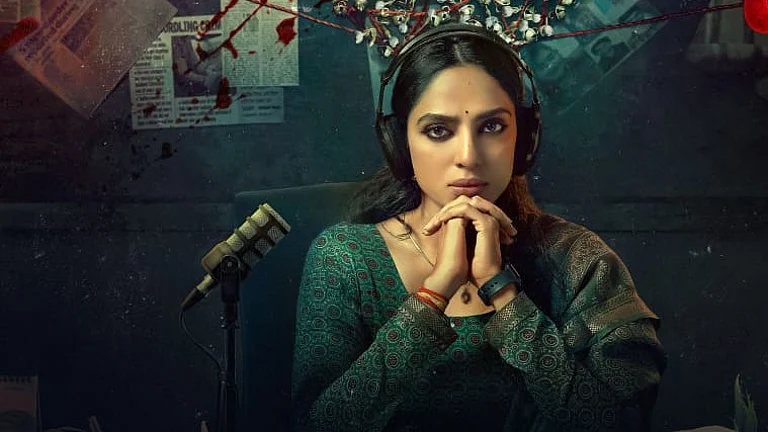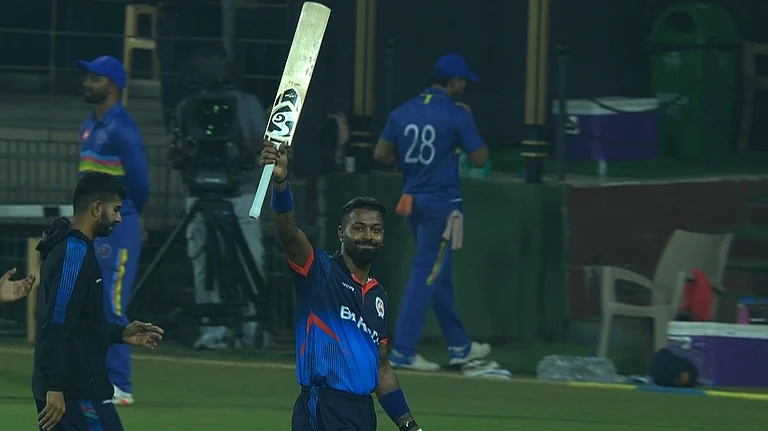The rocks, the swollen waves of the river, the oars of the boat, the plants, are
all tilted towards. Only the sky, far away, retains its horizontal plane. Rama,
Sita and Laksman cross the Ganga on their way to exile. The boat is fragile,
the river turbulent, untamed. Even a god is a small figure here, identifiable
only by his blue body, overwhelmed by the river’s swell and fall.
If divided vertically into two equal halves, any life that is not water is on
the right. The left, the direction in which the boat is moving, contains
nothing but water, distant rocks and an even more distant gleam of sky.
The very centre is wave just before it rises. In the foreground the plants are
utterly frail.
The bows and arrows that Ram and Lakshman hold are powerless, they
cannot pierce the waves. Even a god cannot calm the river or make its
waters shallow, even a god must submit sometimes to the natural world,
must not control, must allow.
The painter is one of the descendants of the master Nainsukh. Around
1780, when the painter made this, a master himself, had he heard a version
of the Ramayana that described the river and the crossing in this way?
In most miniature paintings of the Ramayana, human action forms the
centre and the subject. In other paintings, always on land, was the land
too firm for the painter to create what he himself may have felt about
transformations? Here, in painting Rama crossing over from one life to
another, did the painter consider more acutely how everyone must live
what cannot be predicted? Did water enable his vision? Did he know that
if the swollen river formed the centre of the painting then each viewer would
be able to reach through it and look, at the dangerous crossings of his own
life? Was this the only painting where the life of Nainsukh’s descendant
enters the life of the painting?
This Ganga is grey, the colour of karuna rasa.
The green plants in the foreground increase the feeling of karuna, deep
sadness, lament. There is a homelessness in the rocks that edge the river,
a leaving of all that is secure and safe. Movement is the centre of this
painting, its end unknown. But karuna in Sanskrit is not only lament and
sorrow, it is also compassion, and it emerges here from the painter’s hands.
It is a compassion reversed, for a god who was present in the painter’s
world, and to whom he may have prayed in his own life.
(Sharmistha Mohanty is a poet and novelist)






















